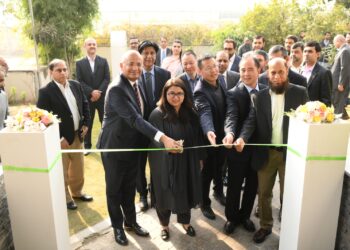Introduction
Pakistan is facing multiple crises that span across economic instability, environmental degradation, and social challenges. Economists and experts believe that adopting a circular economy model can provide sustainable solutions to these pressing issues. A circular economy promotes resource efficiency by reducing waste, reusing materials, and fostering a regenerative approach to economic growth. This shift is crucial for Pakistan as it seeks to achieve financial self-sufficiency and environmental sustainability while creating new employment opportunities.
The Need for a Circular Economy in Pakistan
Currently, Pakistan operates under a linear economy—a model based on the traditional “take-make-dispose” system. This unsustainable approach has led to excessive resource depletion, high levels of pollution, and an ever-growing waste management problem. As countries worldwide transition toward circular economies, Pakistan has a unique opportunity to follow suit and reap substantial economic and environmental benefits.
Economic Growth and Employment Opportunities
One of the most significant advantages of a circular economy is its potential to generate large-scale employment opportunities. By integrating circular principles into key industries, Pakistan can create new markets, boost local businesses, and stimulate economic growth.
Dr. Adeel Ghayyur, a prominent scientist and expert in circular economy, emphasizes that multi-sectoral, policy-based strategies can drive this transformation. He suggests that sectors like agriculture, textiles, construction, petrochemicals, and renewable energy should be the primary focus to achieve the best outcomes.
Agricultural Waste and Biofuel Production
Agricultural waste management remains a critical issue in Pakistan. Every year, millions of tons of crop residues are burned, contributing to severe air pollution and smog, particularly in urban areas like Lahore and Islamabad. Implementing circular solutions, such as converting crop residues into aviation fuel and diesel, can offer multiple benefits:
- Reduction in environmental pollution
- Creation of new industries and research fields
- Development of alternative energy sources
- Job creation in rural and urban areas
The Role of Circular Economy in the Textile Sector
Pakistan’s textile industry is the backbone of its economy, contributing significantly to exports and employment. However, textile production is highly resource-intensive, requiring vast amounts of water, chemicals, and energy. A circular economy approach in this sector can:
- Promote sustainable fashion by recycling and upcycling materials
- Encourage water conservation through advanced purification technologies
- Reduce waste generation by implementing zero-waste manufacturing processes
Construction and Sustainable Building Materials
The construction sector is another area where circular economy principles can drive sustainability. Pakistan’s rapid urbanization has led to a boom in infrastructure projects, but the industry produces enormous waste. Some effective circular solutions include:
- Using recycled materials like crushed concrete and reclaimed wood
- Adopting modular construction techniques to minimize material waste
- Implementing energy-efficient building designs to reduce carbon footprints
Investments in Renewable and Green Technologies
Transitioning to a circular economy requires significant investment in renewable energy and green technologies. According to Dr. Ghayyur, policy reforms should focus on streamlining investments into:
- Solar and wind energy projects to decrease dependency on fossil fuels
- Advanced waste-to-energy technologies for sustainable power generation
- Eco-friendly packaging solutions to reduce plastic pollution
Government Policies and Public-Private Collaboration
For a successful transition to a circular economy, Pakistan needs comprehensive policy reforms and collaboration between public and private sectors. Yasir Hussain, Director of the Climate Action Center (CAC), explains that circular economy principles align with the broader green economy movement, which aims to:
- Encourage corporate responsibility in waste management
- Implement strict environmental regulations
- Provide incentives for businesses adopting sustainable practices
- Increase public awareness about circular consumption habits
Conclusion: The Path Forward for Pakistan
The circular economy presents a viable pathway for Pakistan to overcome its economic, environmental, and social challenges. By reducing waste, reusing resources, and recycling materials, the country can enhance its economic resilience, minimize pollution, and create job opportunities. However, this transition requires policy support, industry participation, and community engagement. If Pakistan successfully adopts circular economy principles, it can not only strengthen its economy but also become a regional leader in sustainable development.

























